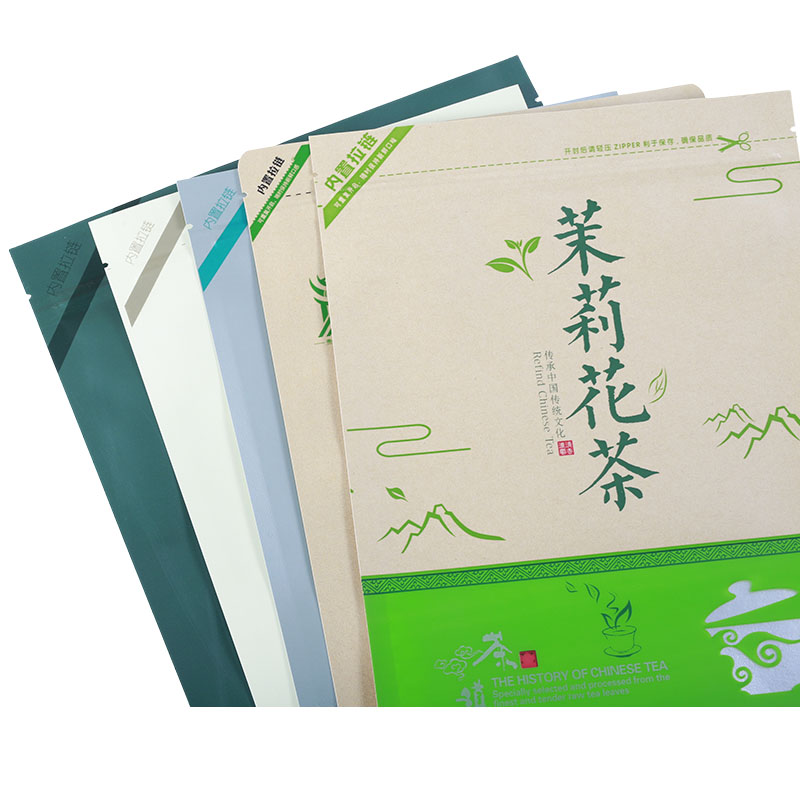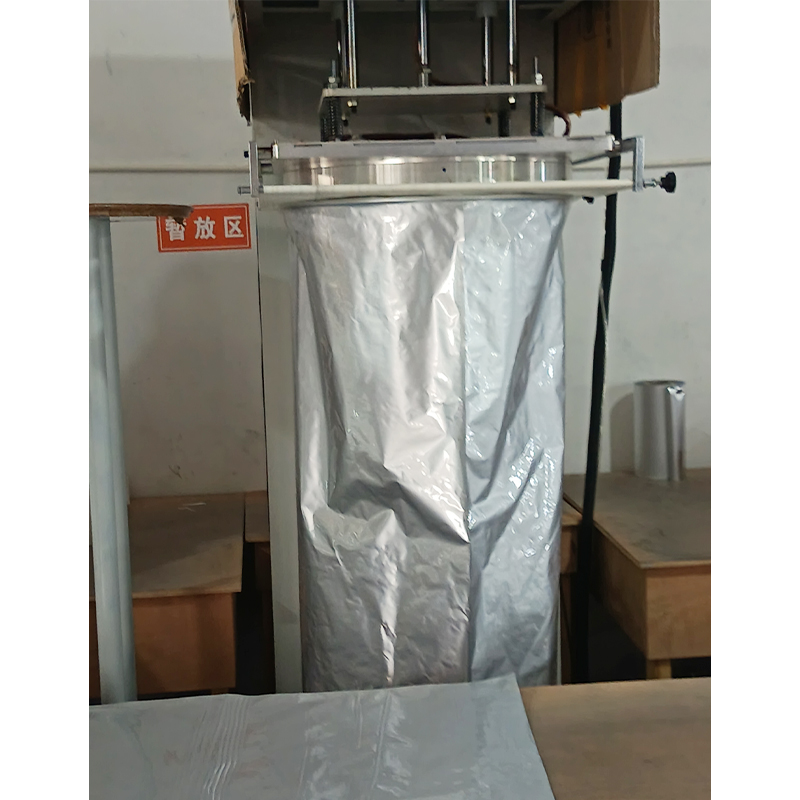How can film bags meet the packaging needs of different products through multiple material options?
Release Time : 2025-06-19
In the modern packaging industry, film bags, as a widely used packaging form, can meet the packaging needs of various products with its diverse material options and flexible processing technology. By carefully selecting materials suitable for different application scenarios, such as PE (polyethylene), PO (polyolefin), OPP (biaxially oriented polypropylene), CPP (cast polypropylene), PET (polyester) and composite films, film bags not only provide excellent protection, but also enhance product display effects, ensure food safety, and enhance brand image.
First of all, a key advantage of film bags using multiple material options is that they can provide the best protection performance according to product characteristics and usage environment. For example, for products that require high barrier properties, such as food, medicine or chemicals, high barrier materials such as PET or composite films can be selected. These materials can effectively prevent the invasion of external factors such as oxygen, moisture, odor, etc. on the product, thereby extending the shelf life and maintaining product quality. At the same time, for some lightweight products that have certain requirements for air permeability, such as fresh fruits and vegetables, special film materials with microporous structures can be selected, which can not only ensure a certain air permeability, but also prevent external pollution and maintain the freshness of the products.
Secondly, film bags show great flexibility in meeting specific functional requirements. Taking electronic components as an example, static electricity is one of the important factors affecting their performance and life. For such sensitive items, anti-static film materials are an ideal choice. This material can effectively inhibit the accumulation of static electricity and avoid product damage caused by static discharge. In addition, waterproof and moisture-proof film bags are particularly important for products that need to be stored or transported in humid environments. They can not only block the entry of external moisture, but also prevent internal water vapor condensation to ensure that the product is always in a dry state.
Furthermore, the appearance design of film bags is also a highlight that attracts consumers. Through printing and laminating processes, brand logos, product information and beautiful patterns can be printed on the surface of film bags, which greatly enhances the visual appeal of the product. In particular, film bags made of high-transparency materials such as OPP allow consumers to directly see the items inside, enhancing their desire to buy. At the same time, the use of special color processing technology and high-quality printing inks can make film bags stand out on the shelves, helping brands to better convey information and establish a unique image.
It is worth noting that film bags also have excellent adaptability and customization capabilities. Whether it is standard size or customized according to drawings, film bags can be produced according to the specific requirements of customers. This includes not only adjustments in size and shape, but also customization for special process requirements, such as anti-ultraviolet and anti-fog treatment. For example, film bags used in refrigerated environments can reduce the formation of condensed water droplets and keep the packaging clear and visible after anti-fog treatment; while for packaging used outdoors, anti-ultraviolet ingredients can be added to prevent material aging and extend service life.
Today, with the increasing awareness of environmental protection, film bags are also constantly exploring the path of sustainable development. Many manufacturers have begun to use degradable or recyclable materials to replace traditional plastics, which not only reduces environmental pollution but also conforms to the trend of green consumption. In addition, optimizing production processes and reducing resource waste have also become the focus of industry attention. From raw material procurement to finished product manufacturing, every link is committed to improving efficiency, reducing energy consumption, and achieving a win-win situation of economic benefits and environmental protection.
In the process of logistics and transportation, film bags also play an important role. The durable material and sophisticated sealing technology ensure the safety of the product throughout the supply chain. Even in long-distance transportation or complex loading and unloading conditions, film bags can effectively prevent damage and leakage, ensuring that the goods arrive at the destination intact. Moreover, due to the light weight and small size of film bags, they are easy to stack and carry, which helps to reduce logistics costs and improve the utilization of storage space.
Finally, the diverse applications of film bags demonstrate their irreplaceable position in various fields. Whether it is daily consumer goods, medical supplies, electronic products or agricultural products, film bags can find suitable solutions. It not only provides the necessary physical protection for the product, but also improves the user experience and simplifies the operation process to a certain extent. For example, in the packaging of disposable medical supplies, the easy-tear design of film bags facilitates medical staff to quickly take it; and in the packaging of snacks, the easy-open seal makes the consumer's eating experience more convenient and pleasant.
In summary, film bags have successfully met the packaging needs of different products through the selection of a variety of materials. From basic protection functions to advanced functional improvements, to beautiful and practical designs, every step reflects the unremitting pursuit of quality and details. With the advancement of technology and changes in market demand, film bags will continue to evolve, bringing more innovative packaging solutions to various industries and helping companies achieve higher commercial value and social responsibility. Whether in the traditional retail market or the emerging e-commerce field, film bags will win wider trust and support with their unique charm and practicality.
First of all, a key advantage of film bags using multiple material options is that they can provide the best protection performance according to product characteristics and usage environment. For example, for products that require high barrier properties, such as food, medicine or chemicals, high barrier materials such as PET or composite films can be selected. These materials can effectively prevent the invasion of external factors such as oxygen, moisture, odor, etc. on the product, thereby extending the shelf life and maintaining product quality. At the same time, for some lightweight products that have certain requirements for air permeability, such as fresh fruits and vegetables, special film materials with microporous structures can be selected, which can not only ensure a certain air permeability, but also prevent external pollution and maintain the freshness of the products.
Secondly, film bags show great flexibility in meeting specific functional requirements. Taking electronic components as an example, static electricity is one of the important factors affecting their performance and life. For such sensitive items, anti-static film materials are an ideal choice. This material can effectively inhibit the accumulation of static electricity and avoid product damage caused by static discharge. In addition, waterproof and moisture-proof film bags are particularly important for products that need to be stored or transported in humid environments. They can not only block the entry of external moisture, but also prevent internal water vapor condensation to ensure that the product is always in a dry state.
Furthermore, the appearance design of film bags is also a highlight that attracts consumers. Through printing and laminating processes, brand logos, product information and beautiful patterns can be printed on the surface of film bags, which greatly enhances the visual appeal of the product. In particular, film bags made of high-transparency materials such as OPP allow consumers to directly see the items inside, enhancing their desire to buy. At the same time, the use of special color processing technology and high-quality printing inks can make film bags stand out on the shelves, helping brands to better convey information and establish a unique image.
It is worth noting that film bags also have excellent adaptability and customization capabilities. Whether it is standard size or customized according to drawings, film bags can be produced according to the specific requirements of customers. This includes not only adjustments in size and shape, but also customization for special process requirements, such as anti-ultraviolet and anti-fog treatment. For example, film bags used in refrigerated environments can reduce the formation of condensed water droplets and keep the packaging clear and visible after anti-fog treatment; while for packaging used outdoors, anti-ultraviolet ingredients can be added to prevent material aging and extend service life.
Today, with the increasing awareness of environmental protection, film bags are also constantly exploring the path of sustainable development. Many manufacturers have begun to use degradable or recyclable materials to replace traditional plastics, which not only reduces environmental pollution but also conforms to the trend of green consumption. In addition, optimizing production processes and reducing resource waste have also become the focus of industry attention. From raw material procurement to finished product manufacturing, every link is committed to improving efficiency, reducing energy consumption, and achieving a win-win situation of economic benefits and environmental protection.
In the process of logistics and transportation, film bags also play an important role. The durable material and sophisticated sealing technology ensure the safety of the product throughout the supply chain. Even in long-distance transportation or complex loading and unloading conditions, film bags can effectively prevent damage and leakage, ensuring that the goods arrive at the destination intact. Moreover, due to the light weight and small size of film bags, they are easy to stack and carry, which helps to reduce logistics costs and improve the utilization of storage space.
Finally, the diverse applications of film bags demonstrate their irreplaceable position in various fields. Whether it is daily consumer goods, medical supplies, electronic products or agricultural products, film bags can find suitable solutions. It not only provides the necessary physical protection for the product, but also improves the user experience and simplifies the operation process to a certain extent. For example, in the packaging of disposable medical supplies, the easy-tear design of film bags facilitates medical staff to quickly take it; and in the packaging of snacks, the easy-open seal makes the consumer's eating experience more convenient and pleasant.
In summary, film bags have successfully met the packaging needs of different products through the selection of a variety of materials. From basic protection functions to advanced functional improvements, to beautiful and practical designs, every step reflects the unremitting pursuit of quality and details. With the advancement of technology and changes in market demand, film bags will continue to evolve, bringing more innovative packaging solutions to various industries and helping companies achieve higher commercial value and social responsibility. Whether in the traditional retail market or the emerging e-commerce field, film bags will win wider trust and support with their unique charm and practicality.








